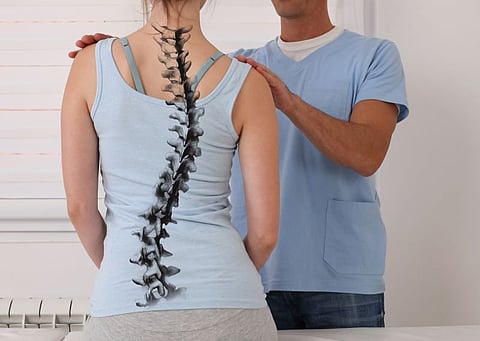FRIDAY, May 12, 2023 (HealthDay News) -- For adolescent idiopathic scoliosis (AIS) patients undergoing posterior spinal fusion (PSF), intraoperative liposomal bupivacaine (LB) infiltration is associated with lower total opioid consumption and shorter length of stay (LOS), according to a study published online May 1 in Spine.
Stuart Changoor, M.D., from St. Joseph's University Medical Center in Paterson, New Jersey, and colleagues analyzed postoperative oral and intravenous opioid consumption, ambulation distance, pain, nausea/vomiting, diazepam intake, and LOS to assess the effect of intravenous LB infiltration on postsurgical pain management in AIS patients in retrospective cohorts. Data were included for 119 consecutive patients with AIS who underwent PSF. Patients were categorized as those receiving LB as erector spinae block in addition to the standard postoperative pain management protocol (group A) and those who received only the standard postoperative pain management protocol (group B).
The researchers observed significantly lower total opioid consumption in group A versus group B (44.5 versus 70.2 mg). Group A had lower morphine use on postoperative day (POD) 0 and lower oxycodone use on PODs 1 and 2. Group A also had a higher proportion of patients who used only oral opioids (81 versus 41 percent). Seventy-nine percent of patients requiring intravenous opioids did not receive LB. Significantly more LB patients were discharged on POD 2 (55 versus 27 percent); shorter LOS was seen for group A. Postoperatively, group A ambulated farther. Pain scores, diazepam requirements, and nausea/vomiting did not differ between the groups.
"The use of a multimodal approach to pain management that includes LB is effective in opioid limitation and avoidance while improving ambulation postoperatively and decreasing LOS," the authors write.
Abstract/Full Text (subscription or payment may be required)




